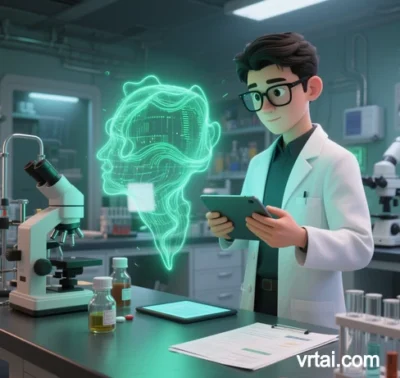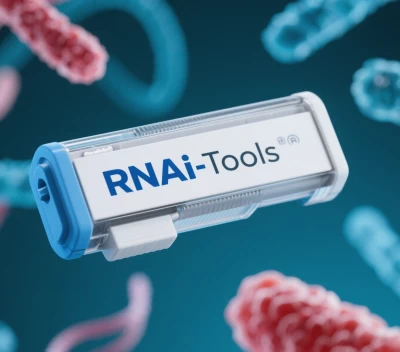
Integration of VRT and AI in Healthcare: 3D Imaging Reconstruction and Clinical Applications (2025 Update)
I. Technical Principles and Breakthroughs
1. Core of Volume Rendering Technique (VRT)
VRT is a voxel-based 3D reconstruction method that generates spatial models by adjusting tissue-specific CT value parameters (transparency, color, lighting). Key advantages include:
- Full Data Utilization: Preserves original 2D image integrity while minimizing artifacts.
- Dynamic Interactivity: Supports multi-angle rotation, layered transparency, and localized lesion magnification.
- Multimodal Fusion: Simultaneously visualizes bone, vascular, and soft tissue relationships.
2. AI-Driven VRT Advancements
- Automated Segmentation: Deep learning algorithms (e.g., 3D U-Net) replace manual annotation for organ and lesion boundary detection, tripling preoperative planning efficiency for liver resections.
- Intelligent Parameter Optimization: Reinforcement learning dynamically adjusts CT thresholds and transparency curves, reducing coronary stenosis misdiagnosis by 40%.
- Real-Time Reconstruction: Photonic chips and quantum encoding compress 3D reconstruction from hours to minutes, enabling intraoperative navigation with sub-50ms latency.
- Multimodal Alignment: CLIP-like architectures align pathology images with diagnostic reports for 3D molecular mapping in gastric cancer diagnosis.
II. Clinical Application Paradigms
1. Cardiovascular Precision Medicine
- Coronary Imaging: AI-powered VRT removes blood pool interference to reconstruct 3D coronary trees, while reinforcement learning optimizes stent placement accuracy to submillimeter precision.
- Structural Heart Disease: 4D fetal cardiac ultrasound reconstruction time drops from 5 hours to 5 minutes, with surgical simulations achieving high anatomical fidelity.
2. Orthopedics & Trauma Repair
- Complex Fractures: VRT visualizes pelvic fracture spatial patterns with submillimeter fragment localization, while adversarial learning aligns MRI data across manufacturers.
- Bone Tumor Resection: Neuro-symbolic systems (Transformer + knowledge graphs) generate 90% visualizable surgical pathways.
3. Oncology Therapeutics
- Radiation Planning: Quantum optimization algorithms (QAOA) reduce healthy tissue radiation exposure while quadrupling target contouring efficiency.
- Chemotherapy Simulation: Digital twins predict neutrophil depletion risks 48 hours in advance.
4. Minimally Invasive Navigation
- Endoscopic Enhancement: VR-integrated VRT models with haptic feedback achieve submillimeter precision in remote punctures.
- Vascular Intervention: Real-time hemodynamic modeling and AI alerts cut aneurysm embolization complications by over half.
III. Challenges & Future Directions
1. Current Limitations
- Data Heterogeneity: Manufacturer-specific MRI variations (e.g., GE vs. Siemens) impact model consistency.
- Computational Demands: Whole-body vascular quantum encoding requires extensive qubit resources.
- Regulatory Compliance: FDA mandates >80% decision-path transparency for AI-VRT systems.
2. Evolutionary Pathways
- Quantum-Enhanced VRT: Tumor detection speeds increase tenfold via quantum-entangled genomic feature encoding.
- Bio-Integrated Interfaces: Neuromorphic chips enable implantable VRT monitors with microwatt power consumption for real-time epilepsy focus tracking.
- Metaverse Surgery: HoloLens2 projects AI-VRT vascular models, cutting complex procedure durations by 40% in community hospitals.
IV. Ethical & Industry Transformation
1. Human-AI Collaboration
- Tiered Decision System:
- Routine Care: AI autonomously handles diagnoses (e.g., chronic disease management with >95% accuracy).
- Complex Cases: AI proposes options for physician validation (e.g., lung cancer staging).
- Critical Procedures: Human-led decision-making (e.g., heart transplant planning).
2. Healthcare Ecosystem Shift
- MLOps Providers: Offer end-to-end services from VRT data annotation to regulatory compliance.
- Insurance Innovation: Digital twin-driven risk assessment slashes premium pricing errors.
Conclusion
The fusion of VRT and AI is revolutionizing medical imaging across three dimensions:
- Spatial Precision: Advances from millimeter to micron-scale accuracy via quantum-photonic computing.
- Temporal Responsiveness: Shifts from offline analysis to real-time decision-making through edge-cloud architectures.
- Clinical Impact: Evolves from diagnostic aid to closed-loop therapeutic systems (navigation + outcome prediction).
The core challenge lies in establishing clinically trustworthy AI-VRT systems, requiring excellence in performance, explainability, and robustness. Emerging neuromorphic chips and biocompatible interfaces may soon enable real-time in vivo 3D imaging, ushering in an era of molecular-spatial-temporal precision medicine.
Data sourced from publicly available references. For collaborations or domain inquiries, contact: chuanchuan810@gmail.com.




